Key takeaways:
- APIs enhance software functionality by enabling applications to communicate, similar to a restaurant menu for ordering without cooking.
- Integrating APIs saves time, facilitates scalability, and improves user experience by leveraging existing services rather than building from scratch.
- Understanding the integration process, including documentation, error handling, and testing, is crucial for successful API implementation and user engagement.
- Best practices include maintaining clear code documentation, version control, and performance monitoring to ensure smooth API operations and user satisfaction.
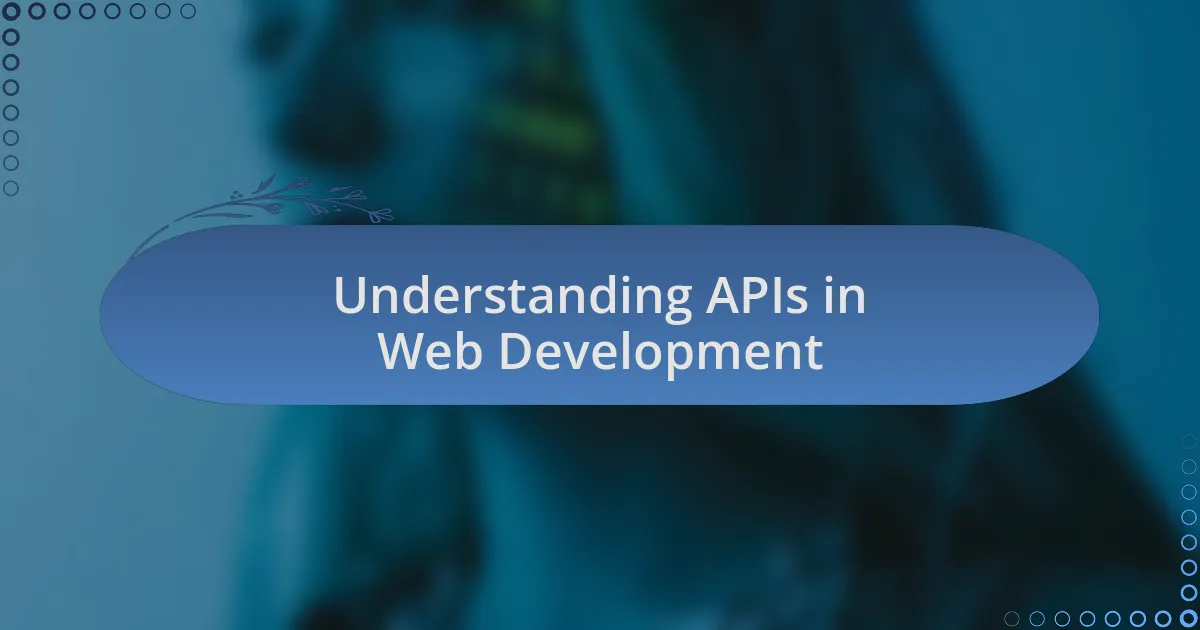
Understanding APIs in Web Development
APIs, or Application Programming Interfaces, serve as the bridge between different software systems, enabling them to communicate seamlessly. I remember the first time I integrated an API into my own project; it felt like unlocking a whole new level of functionality. It’s amazing how with just a few lines of code, I could pull in data from external sources, enhancing my application’s capabilities.
When I think about APIs, I often compare them to a restaurant menu. You can order what you want without needing to know how to cook it. Have you ever felt overwhelmed by the vast options available? I certainly have. But once I got comfortable navigating the API documentation, I realized that understanding these tools not only simplifies development but also opens endless possibilities for creativity and innovation in my projects.
Each API comes with its own rules and format, which can be a bit daunting. I recall struggling with authentication for an API that required a token. It taught me the importance of not just reading the documentation but also experimenting with it. This hands-on approach deepened my understanding and made me appreciate the power APIs hold in expanding what my applications can do. Have you experienced that moment when everything just clicks? That’s the magic of mastering APIs!
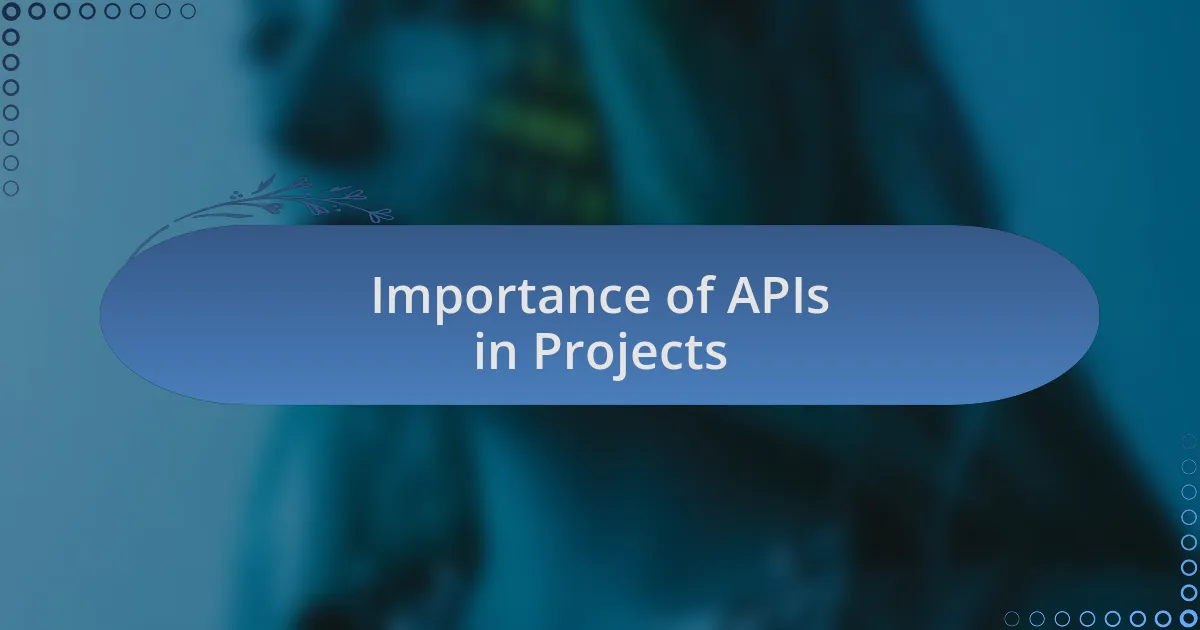
Importance of APIs in Projects
APIs are essential in projects because they foster collaboration between different applications, allowing developers to leverage existing functionalities rather than starting from scratch. A few months ago, I worked on a project that required real-time weather data. By integrating a weather API, I could provide users with up-to-date information without having to create my own data-gathering system. This experience highlighted how APIs streamline workflows, saving time and resources while significantly enhancing user experience.
Another aspect I find fascinating is how APIs facilitate scalability in my projects. When I launched a recent app, I used an API for payment processing instead of building my own payment system. It not only accelerated my development process but also allowed me to focus on other critical features. Can you imagine constantly worrying about payment security? With a reliable API, I could rest easy knowing that this sensitive aspect was expertly handled.
Lastly, the community aspect of APIs cannot be overlooked. Joining forums and reading documentation often leads me to discover new ways to solve problems by learning from others. For instance, while exploring an API for a social media platform, I came across other developers who shared their integration experiences. This collaborative exchange enriched my understanding and made me realize that using APIs is not just about the code; it’s about connecting with a wider network of developers striving for innovation together. Have you found valuable insights through such interactions? It’s truly a game-changer!
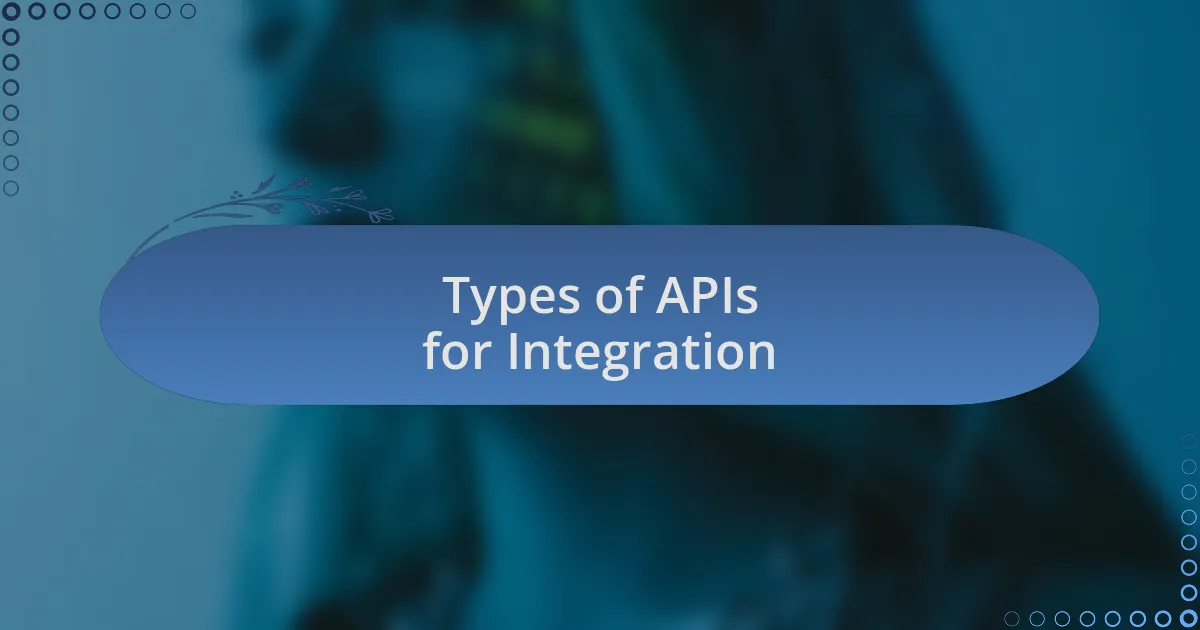
Types of APIs for Integration
APIs can be categorized into several types, each serving different purposes in a project. For instance, I often use RESTful APIs because of their simplicity and ease of integration. These APIs follow a stateless architecture, which allows me to interact with different services using standard HTTP methods. Have you ever found yourself overwhelmed by the complexity of a system? RESTful APIs can break down that barrier by offering a straightforward approach that feels more intuitive.
Another type I frequently explore is the GraphQL API. This powerful tool allows clients to request only the data they need, minimizing the amount of data transferred. I recall working on a project where bandwidth limitations were a major concern. By opting for GraphQL, I was able to tailor my queries precisely, enhancing performance without sacrificing functionality. Isn’t it refreshing to have such control over data? This flexibility not only optimizes loading times but also improves the overall user experience.
Lastly, I can’t overlook the appeal of third-party APIs. Integrating services like payment gateways or social media sharing capabilities has been a game changer in my projects. I vividly remember the first time I added a payment API to an e-commerce site; it transformed the way customers interacted with the platform. It’s incredible how a well-documented third-party API can enhance a project without the added pressure of developing everything in-house. Have you experienced that exhilarating moment when a simple API integration elevates your entire application? It reaffirms my belief in the power of collaboration through APIs.
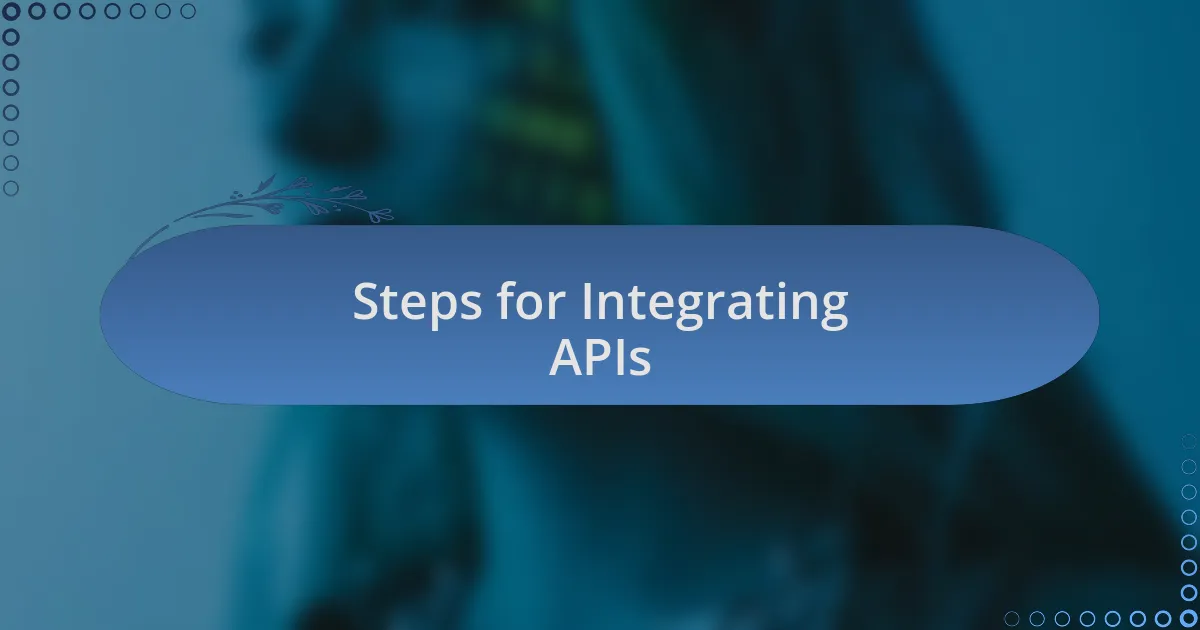
Steps for Integrating APIs
When integrating APIs, the first step I take is identifying the exact functionality I need. This involves gathering requirements and understanding how the API will fit into my project. For example, I remember a time when I needed to implement a mapping feature, and after some research, I quickly decided on a popular mapping API that ticked all the boxes. Have you ever realized that the right API can simplify your code and streamline your workflow?
Once I’ve selected the appropriate API, I dive into the documentation. This is crucial, as I want to ensure I understand the endpoints and the data format needed for requests. I find it helpful to create a small prototype to test basic functionality before fully integrating it into my project. There was an instance where I overlooked an authentication detail and hit a wall, which reminded me that the devil is in the details. Have you had moments like that where a minor oversight led to a significant hurdle?
Finally, I focus on error handling and testing. I always include robust error handling to manage unexpected responses or outages. When I implemented a weather API into my application, I crafted specific feedback for users when data retrieval failed, ensuring the experience remained smooth. Ultimately, integrating APIs isn’t just about adding features; it’s about enhancing the user experience and keeping them engaged, don’t you think? Each step in the integration process builds a stronger connection between my project and its users.
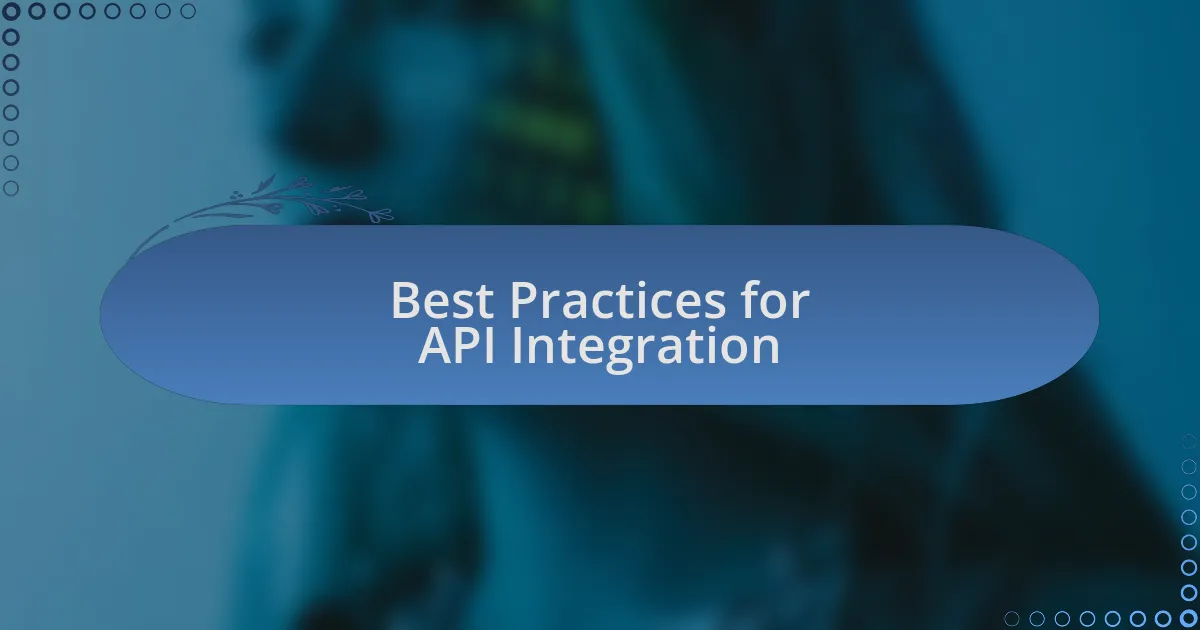
Best Practices for API Integration
When it comes to best practices for API integration, I can’t stress enough the importance of maintaining good documentation for your code. I’ve learned from experience that clear, concise comments can save hours of confusion later on. Imagine coming back to a project after a few months and finding nothing but cryptic code—it’s like trying to solve a puzzle without knowing what the picture looks like. Have you ever faced that frustration?
Another key practice is to always consider version control for the API. I’ve worked on projects where changes in API versions caught me off guard, leading to unexpected errors in my application. By keeping track of the version in use and staying updated on any changes, I mitigate risks and can adapt smoothly. Isn’t it reassuring to know that you have control over such elements?
Lastly, I find that performance monitoring is essential. Integrating APIs can introduce latency, which affects user experience. I implemented a logging system to track API call speeds and response times in a recent project, and it provided invaluable insights. Have you thought about how slight delays can impact user satisfaction? By continuously monitoring performance, I can quickly address any issues and ensure a seamless experience for users.

Sharing My Personal Integration Experiences
Integrating APIs has often been a game-changer in my projects. There was a time when I was tasked with connecting a payment gateway for an e-commerce site. The documentation was extensive, yet it felt like a treasure map—full of details that led to my eventual success. As I navigated through, I experienced a rush of excitement every time I successfully executed a test transaction. Have you felt that thrill when everything clicks into place?
In another instance, I was working on an application that pulled live data from a weather API. Initially, I underestimated the data formats and how they would integrate with my existing system. I still remember the panic when my app displayed outdated weather information. That taught me the vital lesson to always conduct thorough testing with realistic data scenarios. Have you ever had a moment where a small oversight led to a big headache?
I also recall a project where negotiating rate limits with an API provider became crucial. I was caught off guard by the limitations during peak usage, leading to frustrations on both ends. This experience taught me the value of proactive communication and planning around API restrictions. Isn’t it fascinating how a single aspect of API integration can shape the entire project flow? By learning from these experiences, I’ve developed a more thoughtful approach to managing API integrations.